Samsung The Frame (2024) is not just an ordinary television that you could put in the corner and forget about after two days. Here, it's immediately evident that the manufacturer focused on something beyond just displaying movies. First, the "Art" mode catches the eye – with just a few clicks, we can turn The Frame into a digital gallery, showcasing artworks that, combined with the matte panel, truly resemble a real painting in a frame. And speaking of the frame, we have the option to customize its color to perfectly match our interior. Additionally, the package includes a wall mount, allowing the TV to be hung practically "flat," which further enhances the impression of engaging with a picture rather than a typical screen. The matte panel provides excellent protection against light reflections, which, paired with high brightness (650 cd/m²), works well in full sunlight. Moreover, we have a VA panel with quite decent contrast and a refresh rate of 120 Hz, so when watching sports or playing dynamic titles, everything appears really smooth and pleasant to the eye. If we add a gaming features package – VRR, ALLM, and HGiG – it becomes clear that Samsung also thought of console and PC fans. As a result, The Frame can be both a picturesque decoration for the living room and a quite sensible gaming monitor. The aforementioned One Connect is another handy gadget – thanks to it, we can hide all cables in one place, pulling only a thin wire connecting the TV to this magical box. If we like order, this is a solution made for us. Another advantage is the Tizen system – user-friendly, fast, and full of applications. We might not find absolutely everything in it (e.g., the Tidal app), but it still offers a wide range of options for searching new streaming platforms. Of course, there’s no rose without thorns. The lack of local dimming is noticeable in dark scenes, where black becomes less defined. We also have to remember that there is only one HDMI 2.1 port, so if we want to connect more devices in 4K and 120 Hz, we might feel limited. Additionally, viewing angles are rather average, so it's better for the most important viewer (i.e., us) to sit directly in front of the TV. For Dolby Vision fans, this also won’t be the perfect choice, as The Frame only supports HDR10 and HDR10+. Moreover, the sound – like in most slim TVs – is mediocre, so it's worth considering a soundbar if we care about clearer bass and a bit deeper sound. Despite these weaker points, The Frame still leaves a great impression. It is striking, stylish, and versatile – suitable for watching the latest hits as well as displaying reproductions of paintings on the wall. If we care about a unique appearance, high brightness, and at the same time want to play something with low input lag, this model will be a home run. And although it may not be the leader in terms of cost-effectiveness or a technological "monster" in terms of picture quality, it has something that is simply likable. It’s a piece of equipment that stands out with its unique character and can fit into any interior, attracting attention both in TV mode and as a digital art gallery.
- Matching (Score)
- Our verdict
- TV appearance
- Where to buy
- Contrast and black detail
- HDR effect quality
- Factory color reproduction
- Color reproduction after calibration
- Smoothness of tonal transitions
- Image scaling and smoothness of tonal transitions
- Blur and motion smoothness
- Console compatibility and gaming features
- Input lag
- Compatibility with PC
- Viewing angles
- TV efficiency during daytime
- Details about the matrix
- TV features
- Apps
- Playing files from USB
- Sound
Samsung The Frame LS03D vs Hisense U7Q PRO
Direct compare
Check the best price offer:
Samsung The Frame LS03DThe Frame / LS03D
U7Q PRO / U78Q PRO


Panel type: LCD VA
Resolution: 3840x2160
System: Tizen
Model year: 2024
Complete the survey to find out the result

Panel type: LCD VA
Resolution: 3840x2160
System: VIDAA
Model year: 2025
Complete the survey to find out the result

Overall rating
7.0
7.4
Movies and series in UHD quality
6.9
7.2
Classic TV, YouTube
6.5
7.1
Sports broadcasts (TV and apps)
6.2
6.7
Gaming on console
8.2
8.3
TV as a computer monitor
7.6
8.2
Watching in bright light
6.5
6.2
Utility functions
8.1
9.4
Apps
8.7
7.7
Sound quality
5.8
7.8
Complete the survey to find out what fits your preferences
Advantages
Unique design and "Art" mode - the television fits perfectly into interiors and serves as a digital frame for images
Matte screen - effectively reduces glare
Possibility of personalizing the TV frames - adapting the appearance to the interior
Dedicated wall mounts included (Value approx. 400 PLN) - the TV can be mounted almost flush to the wall
High brightness (650 cd/m²) - excellent visibility even in well-lit rooms
VA matrix - decent contrast
Good motion fluency - 120Hz*
Support for VRR, ALLM, and HGiG - a full set of gaming features
Smooth tonal transitions - one of the best results in this category among tested TVs
One Connect module - minimizes cable clutter, ensuring tidiness
Tizen system - responsive, intuitive
*Does not apply to the 43 and 50 inch variants (60Hz)
Great contrast and blacks - true Mini-LED backlighting with a VA panel (65")
Very good motion smoothness - 4K@165 Hz panel
Very high HDR brightness - even above 1500 nits
Perfect for gaming - Low input lag, VRR, ALLM, 4x HDMI 2.1, 288Hz at 1080p.
The Vidaa operating system has many features, e.g. Airplay, USB recording
Outstanding quality of tonal transitions
Disadvantages
Lack of local dimming – affects the quality of black, especially in dark scenes
Average viewing angles – the image loses quality when viewed at a greater angle
Average sound quality – flat sound without depth
Limited number of HDMI 2.1 ports – only one port supports full 4K@120 Hz
No Dolby Vision – the TV only supports HDR10 and HDR10+
No support for HGiG
Average viewing angles
Missing apps on the VIDAA platform
Our verdict
The U7Q PRO is a television that, after just a few minutes, gives a clear signal: "speed matters here." Hisense surprised us with how much they managed to pack into a device that doesn’t cost a fortune. A refreshing rate of 165 Hz in 4K, and even 288 Hz in Full HD – not that long ago, such numbers were reserved exclusively for top gaming monitors. And here you go, we have a mid-range television with almost a full set of gaming features that confidently throws down the gauntlet to much more expensive competitors. However, it doesn't stop at speed-related qualities. The U7Q PRO also boasts a very bright screen, which peaks at even 1500 nits. Like every Mini-LED, it has its typical "moods" associated with this technology, sometimes slightly exaggerating the image, but the overall visual effect remains very positive – especially with HDR content. It's also worth mentioning the Vidaa operating system – fast, intuitive, and equipped with features such as AirPlay, a voice assistant, and a web browser. Although you won't find the full range of apps known from Android here, the system performs really well in everyday use. So why is it "almost" ideal for gamers? It’s just missing the HGiG feature, which allows for precise adjustment of brightness levels in HDR games. This is a minor flaw, but it may be significant for console purists. Nonetheless, the U7Q PRO remains a very solid offering – and at the same time proof that Chinese manufacturers have not only caught up with their competitors from Korea or Japan but have even begun to outpace them in some aspects.
TV appearance





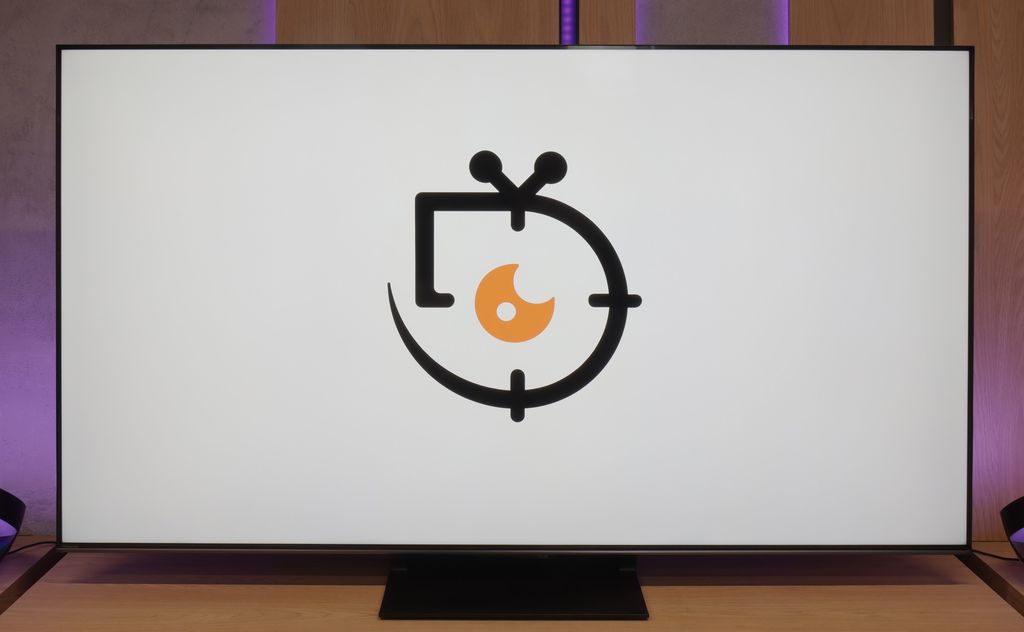
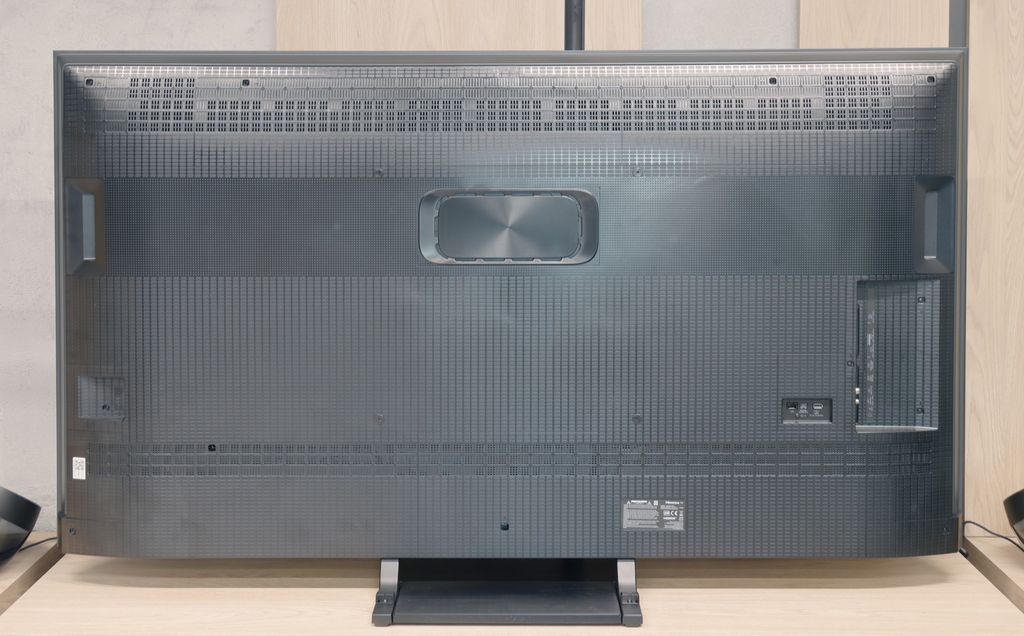
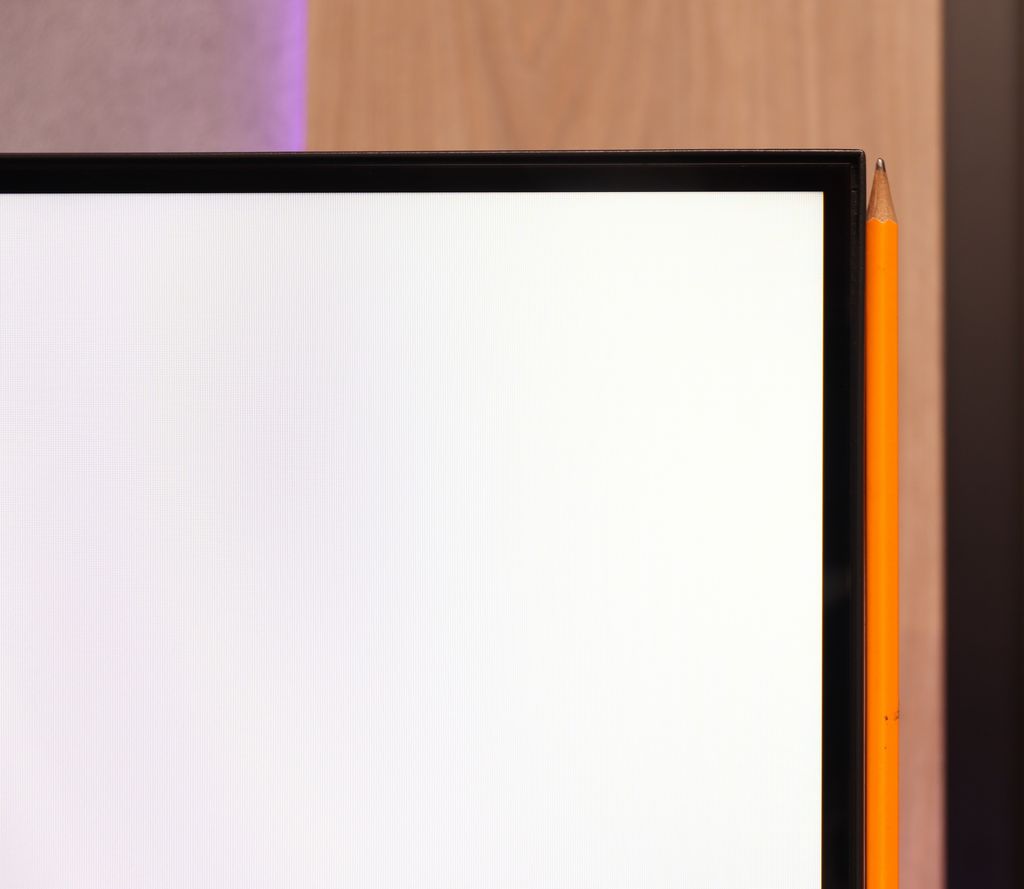

Contrast and black detail
5.6/10
8/10
Local dimming function: No
Local dimming function: Yes, number of zones: 560 (20 x 28)
Contrast:

Result
4,200:1

Result
4,800:1

Result
5,100:1

Result
5,300:1

Result
3,850:1

Result
340,000:1

Result
62,850:1

Result
42,000:1

Result
11,100:1

Result
7,500:1
Halo effect and black detail visibility:

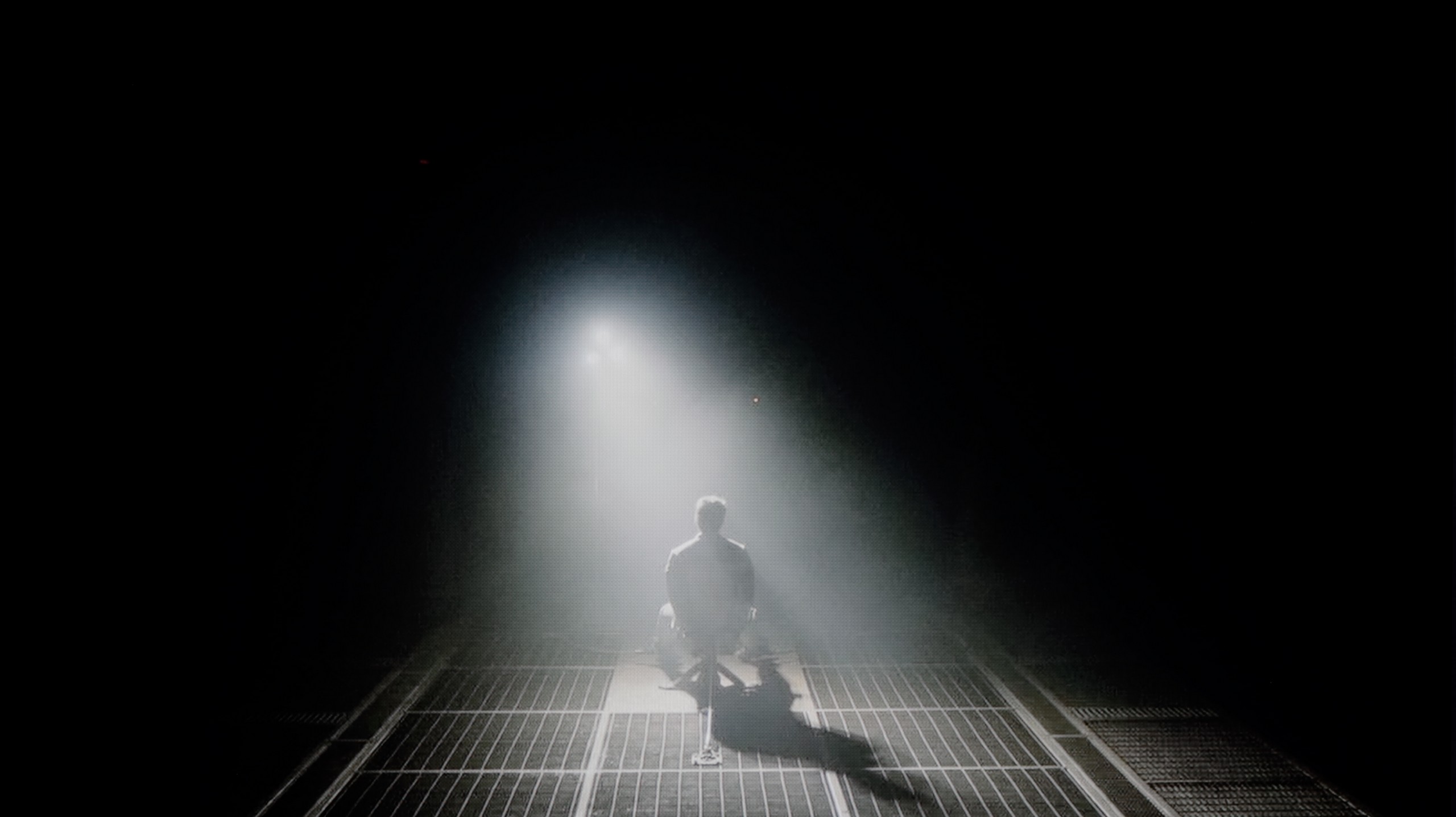
The Frame uses a VA panel, which in itself provides quite high contrast. In our tests, the results ranged from 4000 to 5000:1, which will be quite sufficient for most users. However, the lack of local dimming becomes noticeable, especially on more demanding test screens. In dark scenes, one can notice that the black has a slight navy hue. During the day or in a well-lit room, this won't be an issue, but during an evening viewing, more discerning viewers may feel a slight disappointment.
The Hisense U7Q PRO is an mini-LED television with a VA panel and - in the 65-inch version we tested - 560 local dimming zones. It's worth noting that this number varies depending on the size - larger diagonals will have more zones, while smaller ones will have correspondingly fewer. But regardless of that, the dimming system itself works really solidly here.
The contrast performs really well, considering the price range this model falls into. Under the best conditions, the U7Q PRO can achieve results close to six-digit values, which until recently was reserved for much higher-end equipment. In practice - in scenes like the one from the movie Oblivion - the picture looks stunning. With a bit of light on in the room, it's hard at first glance to distinguish this television from organic screens. Of course, it's still an LCD with local dimming, so compromises are unavoidable. In more challenging scenes, where many small light sources appear, the U7Q PRO tends to dim too aggressively. Instead of a slight deterioration of black levels, some details that should be visible disappear. This is a side effect of the algorithm that strongly adheres to the principle of "black should be black," even at the cost of subtle image elements.
But all in all - contrast is one of the stronger points of this model.
HDR effect quality
6.4/10
6/10
Luminance measurements in HDR:

Result
679 nit

Result
663 nit

Result
712 nit

Result
698 nit

Result
726 nit

Result
1129 nit

Result
323 nit

Result
721 nit

Result
267 nit

Result
736 nit
Scene from the movie “Pan” (about 2800 nits)

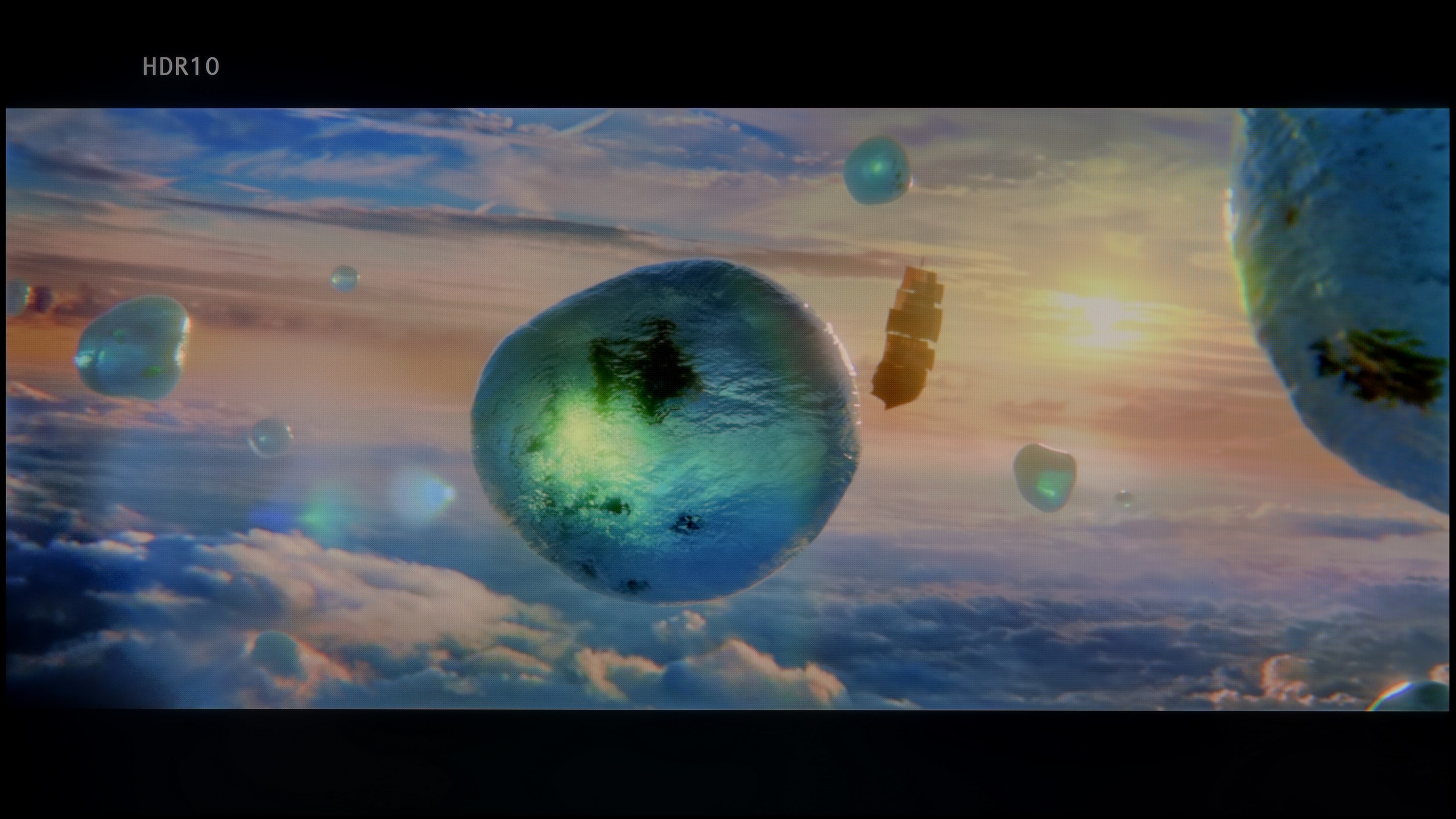
Scene from the movie “Billy Lynn” (about 1100 nits)


Static HDR10


Dynamic: HDR10+
Dynamic: Dolby Vision


HDR luminance chart:
Hisense U7Q PRO
Luminancja HDR
Luminance of RGB colors
Samsung The Frame LS03D
Luminancja HDR
Luminance of RGB colors
The Frame really handles brightness well. With results at the level of 700 nits, bright elements on the screen look impressive and detailed, whether they illuminate the entire screen or appear as small bright spots against a dark background. In more demanding scenes, like the fourth sequence from the movie Sicario 2, the blacks perform averagely, but we already discussed that in the section regarding contrast. However, when it comes to brightness – here the TV definitely performs well. An additional advantage is the quantum dot coating, i.e., QLED technology. Thanks to it, the color palette coverage has been improved, although The Frame does not stand out in this regard compared to the competition.
U7Q PRO is truly a bright television. In synthetic tests, it achieved over 1500 nits, which is an outstanding result for this price range. Such brightness – at least in theory – allows for displaying HDR content as intended by creators, even in more demanding scenes with strong light. In practice, it can be very good, but not always perfect. In bright scenes with a large surface area – such as the test screen with intense sunlight from the movie "Pan" – U7Q PRO makes a huge impression. It can almost blind with light, which is definitely an advantage in the context of HDR content. Unfortunately, this is not always maintainable when a lot of small bright details appear on a dark background. In such moments, local dimming algorithms decide to dim some bright elements to maintain good black levels – and the side effect is that some details simply disappear from the frame. This is a classic compromise in mini-LED televisions – and U7Q PRO is no exception. However, with such a large number of dimming zones, one could expect a somewhat more mature algorithm responsible for controlling them. Fortunately, the overall reception of HDR content is very positive. U7Q PRO is not only bright but also colorful; thanks to the PFS LED (QLED) coating, the coverage of the DCI-P3 color palette is at 95%, and BT.2020 is around 73%.
Factory color reproduction
7/10
6.2/10


Factory Mode
After calibration


Factory Mode
After calibration
Samsung offers several picture modes in its TVs, but without a doubt, the Filmmaker Mode is the one that should provide the most natural representation of content. Unfortunately, as is often the case with mass production, the differences between units can be significant, and our tested model did not escape a few problems.
In the case of SDR content, the white balance heavily leaned towards red, with a slight boost in blue. This effect was particularly visible in comparison photos – in the example of a photograph with a boy, whose face was almost unnaturally flushed. The gamma, or brightness characteristic, also did not perform perfectly – the image was slightly brightened, which took away its depth.
In 4K HDR content, the white balance was again dominated by red, this time combined with green. Meanwhile, blue clearly lost intensity, which could be easily noticed on the Color Checker palette, where the colors began to "run away" in the wrong direction. The EOTF curve, responsible for brightness in HDR content, showed that the TV tends to excessively brighten the image, especially in the darkest elements of scenes.
Overall, although it did not look tragic, it definitely needed correction. Fortunately, Samsung offers extensive calibration options, which provide an opportunity for significant image improvement. Therefore, we proceeded with professional calibration to extract the full potential of this TV.
We tested the U7Q PRO in the best possible picture mode that this model offers – Filmmaker Mode. And indeed, it is this mode that performs best in terms of color reproduction. But that doesn't mean it's perfect. In our test unit, both in SDR and HDR content, the image had a slightly cooled tone. The white balance was shifted towards blue, which made the overall impression feel a bit "cooler." It's not glaring, but definitely noticeable – especially on white backgrounds that, instead of neutral, appeared slightly bluish. Additionally – as we mentioned earlier – the television tends to slightly brighten and oversaturate the image, which is also confirmed by the gamma and EOTF charts. All of this together means that without calibration the image may seem a bit unnatural – too cool, with slightly exaggerated dynamics. That's why we decided to conduct our own calibration – and its effects and charts can be seen below.
Color reproduction after calibration
8.1/10
7.5/10

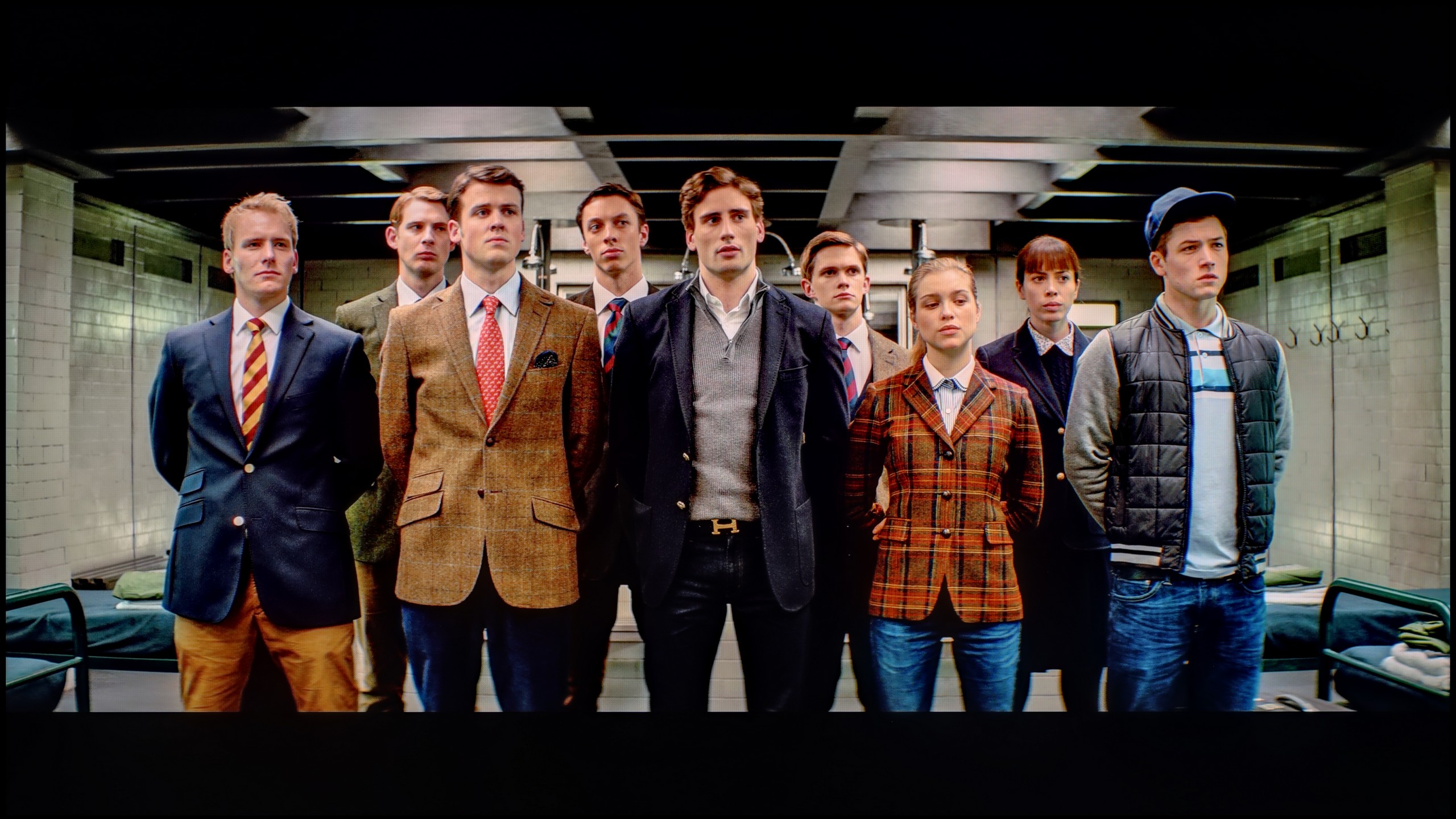


After professional calibration, the Filmmaker Mode shows its full potential. The white balance in HD content is exemplary – an error level of 0.5 indicates almost perfect color reproduction precision. The image now looks natural, and the colors are exactly as they should be. In 4K HDR content, the effect is not as perfect, but it still maintains a really high level. The colors are vibrant, well-saturated, and the overall image quality is impressive.
So where does the problem arise, if we praise the color reproduction so much? Unfortunately, the overall experience is disrupted by the brightness characteristic. The gamma in HD content looks decent, but in 4K HDR it's not as good. The EOTF curve shows that the TV excessively brightens certain parts of the image, which is a result of design limitations. The lack of local dimming means that the TV cannot precisely control the differences between the brightest and darkest areas of the screen. This is a barrier that simply cannot be overcome in this model.
Nevertheless, after calibration, The Frame offers excellent color reproduction, especially in HD content, and the overall appearance is much better than before the settings correction.
Thanks to calibration, we managed to tame the white balance in both SDR and HDR content. For SDR materials, the effect is really very good – the image becomes neutral, consistent, and simply pleasant to view. Everything looks as it should.
The performance in HDR is a bit worse. Although the white balance looks correct and overall the image gains in naturalness, unfortunately, delta E errors remain noticeable. Why? Because Hisense does not give us full control over how the U7Q PRO manages brightness in HDR mode. This is where the limitation appears. When we look at the EOTF curve for HDR content, we can clearly see what we mentioned earlier – at the beginning of the graph, there is a noticeable drop, meaning the television dims the smallest sections more than it should. On the other hand, the brightest elements can be illuminated a bit too much. As a result, some details are lost, others are too aggressive, and overall control over brightness does not always align with what we are trying to achieve during calibration.
Does the image look better after calibration? Definitely yes, in terms of color. But when it comes to managing brightness in HDR, we have to accept that the Hisense U7Q PRO will do it its own way.
Smoothness of tonal transitions
9.7/10
9.5/10







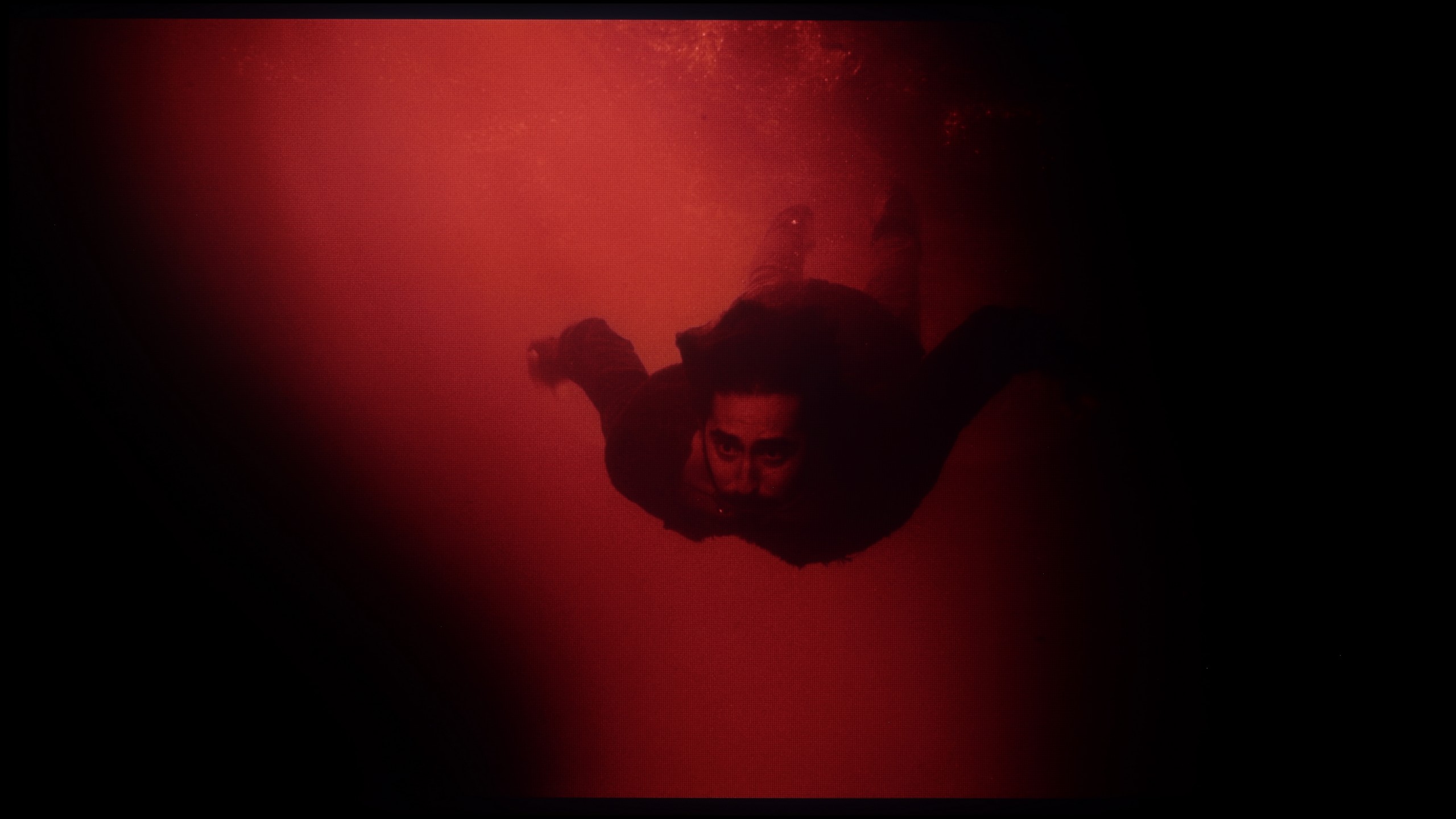




This is one of the best TVs we have had the opportunity to test in terms of the smoothness of tonal transitions. Any potential imperfections are so minor that you really have to strain your eyes to notice them. They are subtle enough that we only deducted a symbolic fraction of points in this category. Undoubtedly, this is one of the greatest advantages of this model. It's possible that such a good effect is partly due to the matte coating of the screen, which gently masks any irregularities in color gradation. The smoothness of tonal transitions in The Frame is at a level that will satisfy even exceptionally demanding users. Kudos to the LS03D!
The U7Q PRO handles tonal transitions really well. Colors blend smoothly, without any banding, stripes, or strange artifacts. Even in more challenging scenes that usually bring out any imperfections—there was nothing to complain about here. The image simply looks clean. Gradients—both colorful and gray—are fluid, nothing tears, nothing distracts. It's one of those elements you don't notice while watching… certainly not in the case of the U7Q PRO.
Image scaling and smoothness of tonal transitions
7.1/10
7/10
Smooth transition function

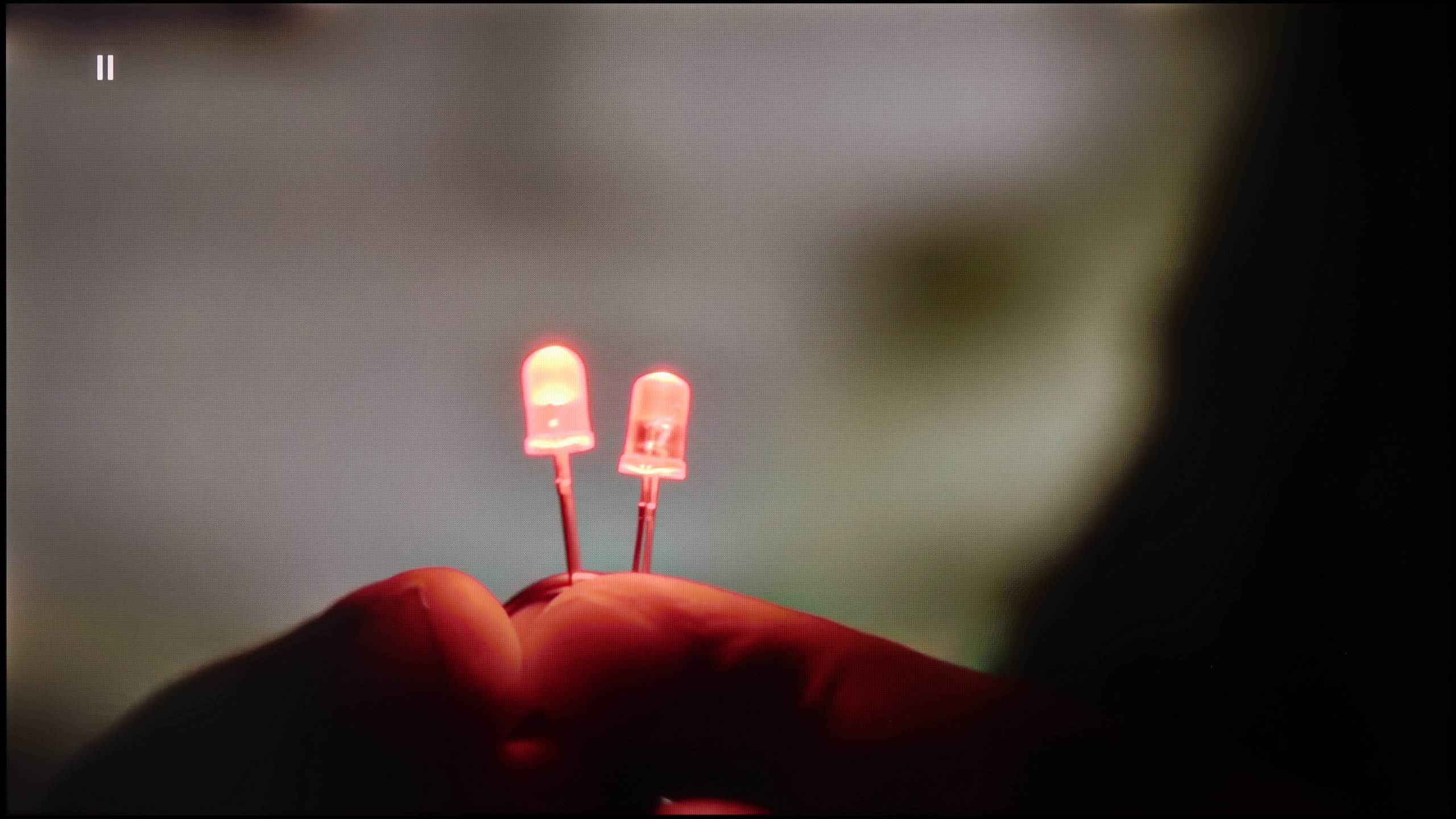
Image without overscan on the SD signal


It was time to check how The Frame handles older, lower-quality materials. We already know that the smoothness of tonal transitions is very high here, so we were curious to see how the TV would manage their smoothing.
The noise reduction feature in the "Standard" setting performs well – tonal transitions are noticeably smoothed out, and the image does not lose too much detail. However, it's worth noting that this effect also smooths out film grain, so its use will be a matter of individual preference.
When it comes to image scaling, the TV also performed really well. The tested frame was solid – the model was rendered correctly, with clear details. The branches in the background, although slightly jagged in places, generally look natural and do not stand out as a flaw.
If someone happens to come across older materials where the issue of color banding appears – Hisense has a solution for that. In the U7Q PRO, we find a feature called "Smooth and Gradient Picture." Set to the "Medium" level, it works really well – it eliminates most of the gradation issues while not smoothing out the entire image, like blur in Photoshop. 😉 Film grain remains, details do not disappear – this is exactly how it should work. Kudos for the implementation!
As for scaling weaker materials, it’s just good. It’s not at the level of the most expensive TVs with advanced upscaling, but older content looks good. There is some mild aliasing at very low resolutions, but that’s completely normal and hard to avoid. On the plus side – even with the oldest materials, there is no overscan effect; the image is not cropped or artificially stretched.
Blur and motion smoothness
6.4/10
7.5/10

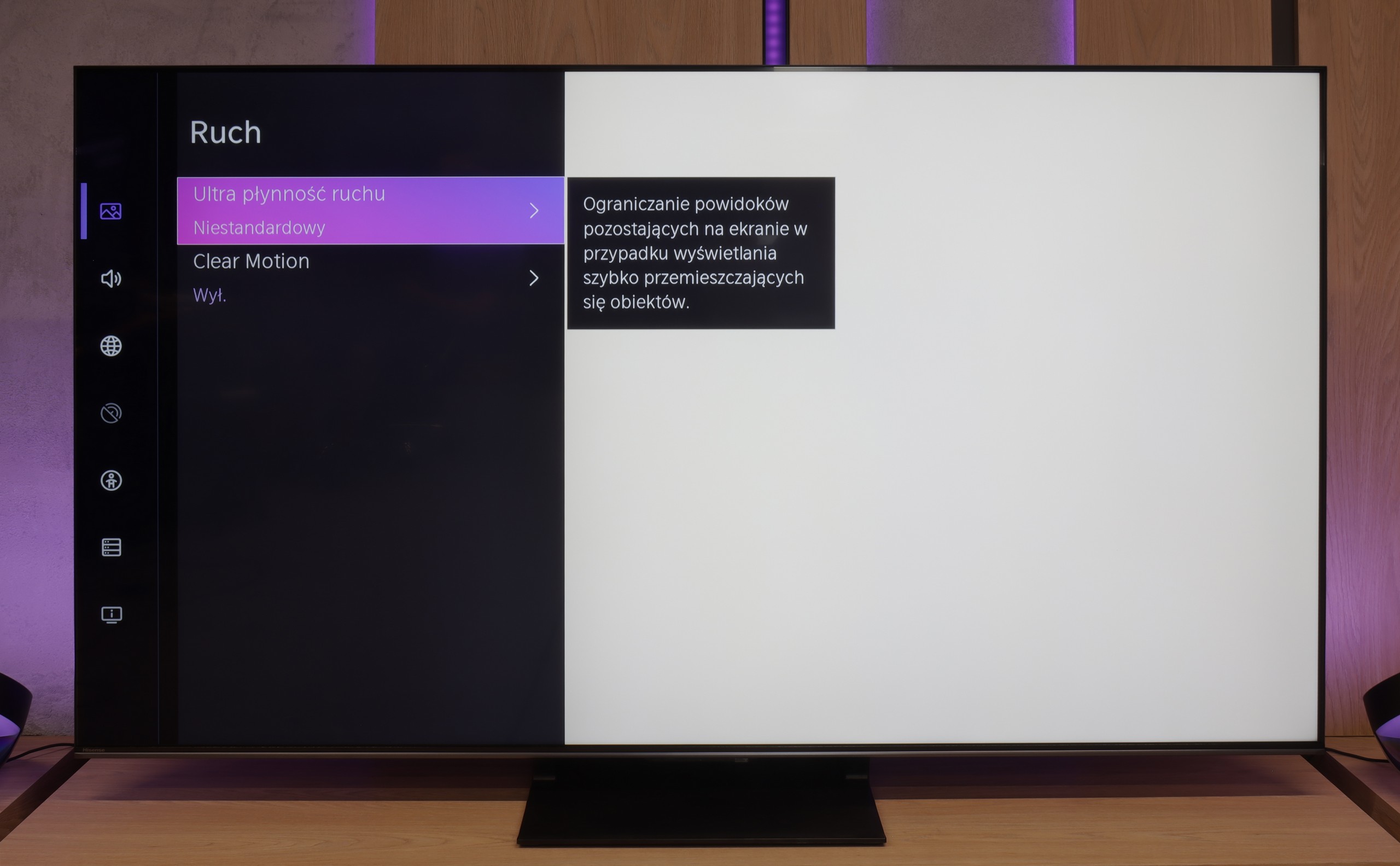
Blur (native resolution, maximum refresh rate):



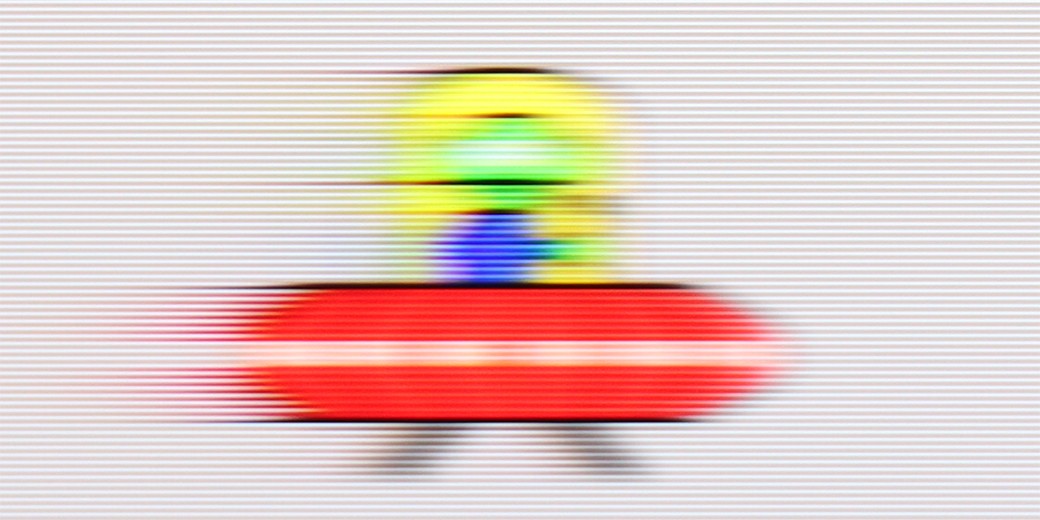
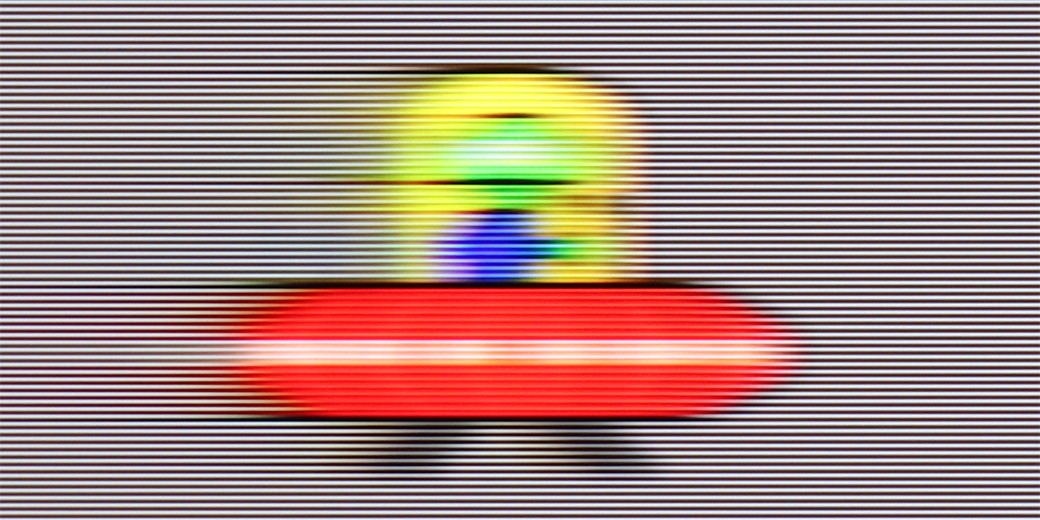
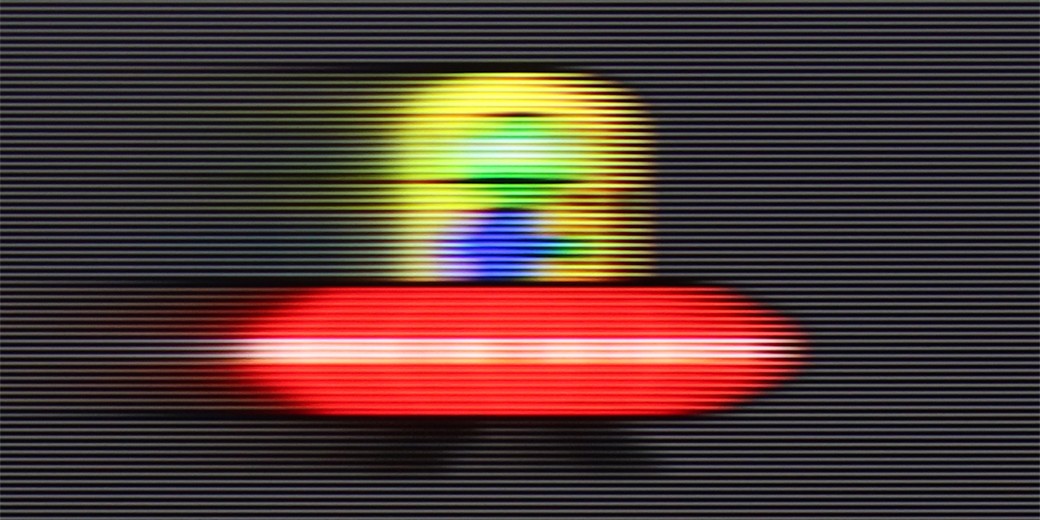
Blur (BFI function enabled):
Image flickers in this mode



Smużenie ():
Smużenie (1080p 288Hz):

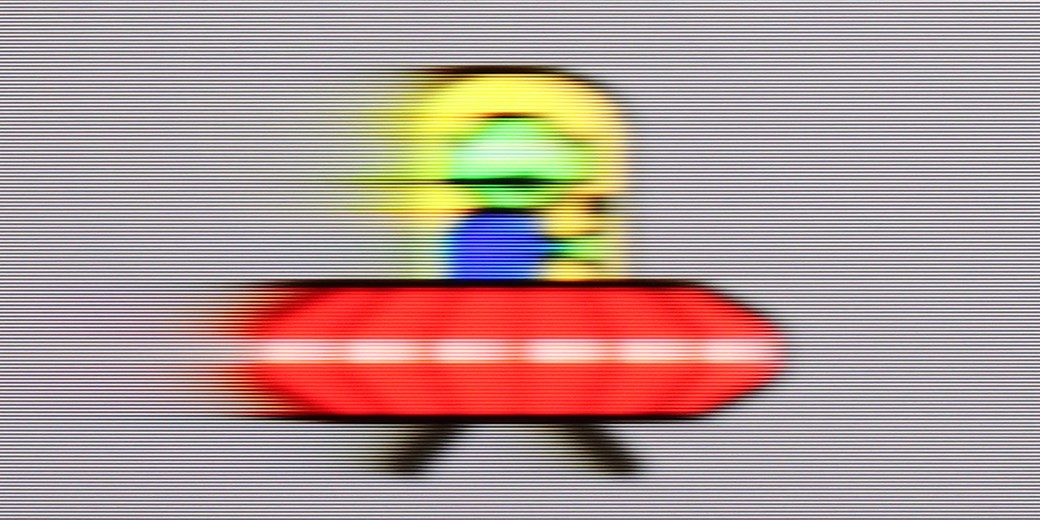

First of all, it is worth noting that the model we tested in 55 inches, just like the 65, 75, and 85-inch versions, is equipped with a 120 Hz panel. Unfortunately, the 43 and 50-inch variants of this series offer only 60 Hz panels, which is worth considering when making a purchase. As for improving motion fluidity, the TV offers a feature called "Picture Clarity." This is a classic motion smoother that gives users the ability to adjust it using two sliders:
Motion Blurring Reduction – this is responsible for sharpening the image during dynamic scenes. The higher the value, the less blur during rapid camera movement or moving objects. However, overly aggressive settings can make the image look unnatural and start to resemble a “soap opera”.
Judder Reduction – this slider affects the smoothness of frame playback, particularly in materials with a lower frame rate, such as films (24 fps). Higher settings can smooth out motion but can also lead to an excessive "plasticky" effect on the image.
Both sliders operate on a scale from 0 to 10, allowing for precise adjustment of the effect to one’s own preferences. It is worth experimenting with the settings to find the perfect balance between fluidity and the natural appearance of the image. We recommend setting them as shown in the picture.
“Speed” – this word was mentioned most frequently during our tests of the U7Q PRO. The television is equipped with a 165 Hz panel, which is impressive in itself – especially since we are talking about a model in the mid-price range. Of course, PC gamers will benefit the most from its full capabilities, but even during everyday viewing, it is evident that this is a fast and efficient panel. Like most modern televisions, the U7Q PRO can also enhance the smoothness of movies that are primarily shot in 24 frames. In the menu, there is a slider that allows you to adjust the effect to your preferences – from a more cinematic feel, with subtle motion, to stronger smoothing with the characteristic “soap opera effect.”
Console compatibility and gaming features
8.8/10
8.5/10
- ALLM
- VRR
- VRR range48 - 120Hz48 - 288Hz
- Dolby Vision Game Mode
- Correct implementation of HGIG
- 1080p@120Hz
- 1440p@120Hz
- 4K@120Hz
- Game bar

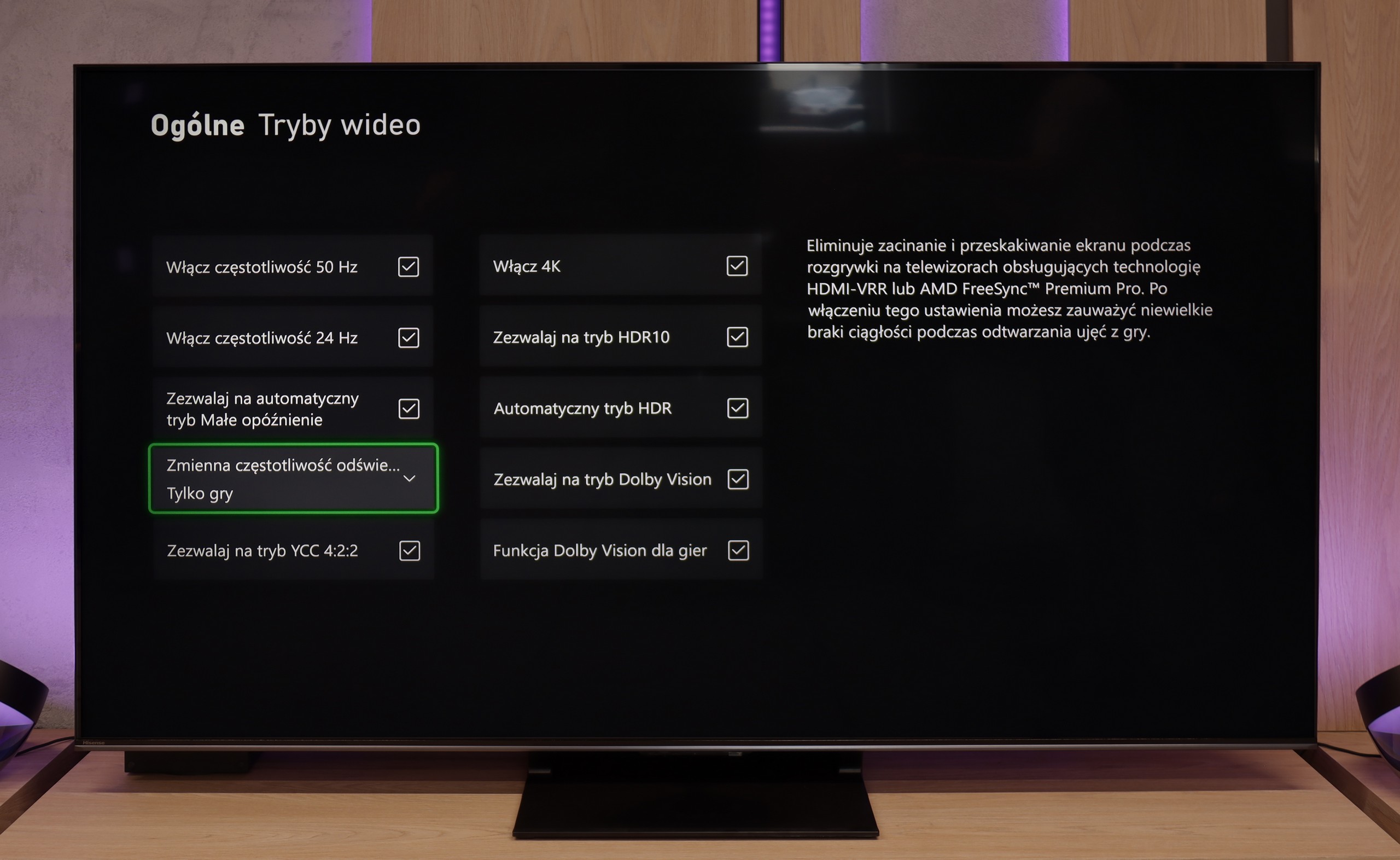



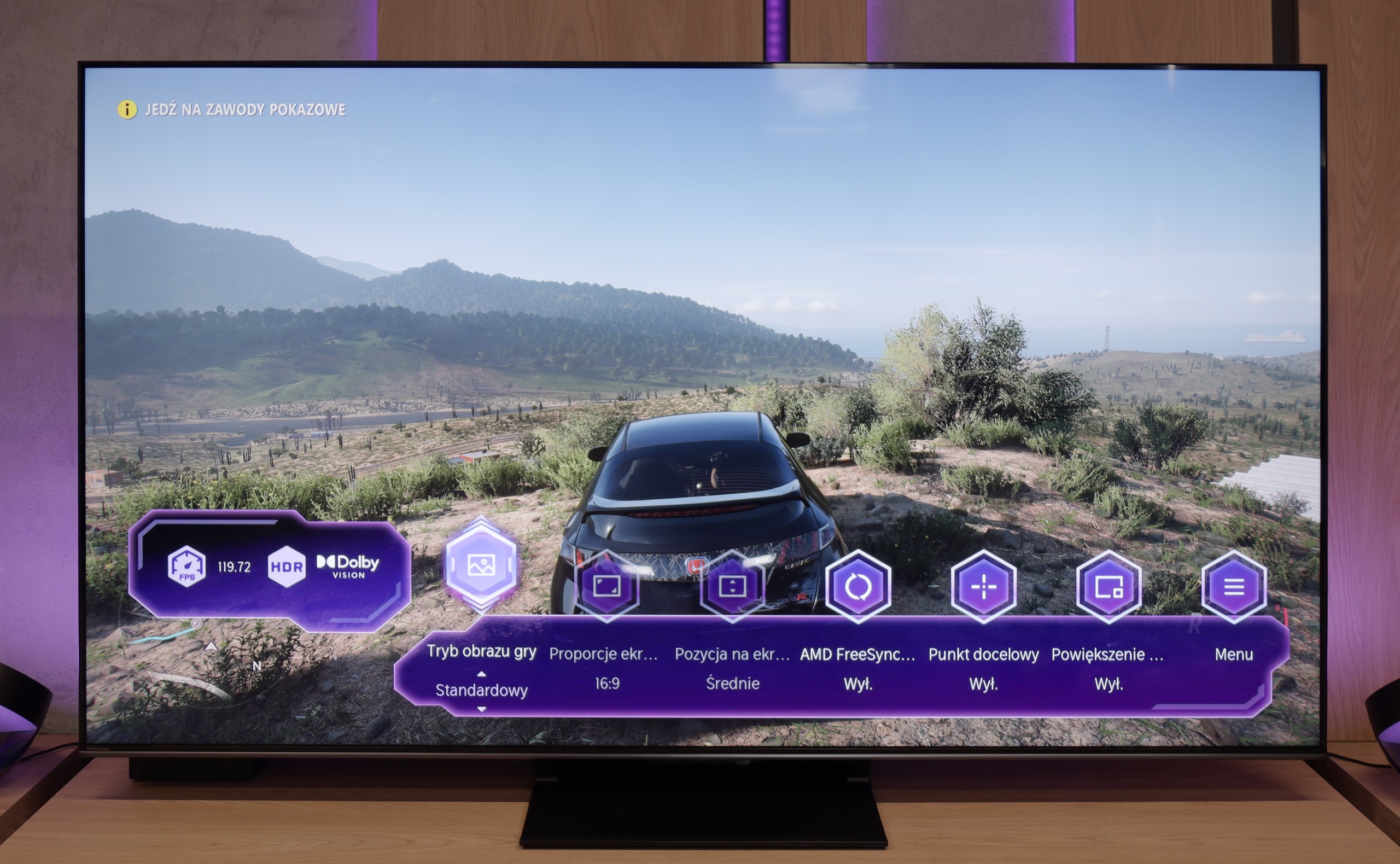

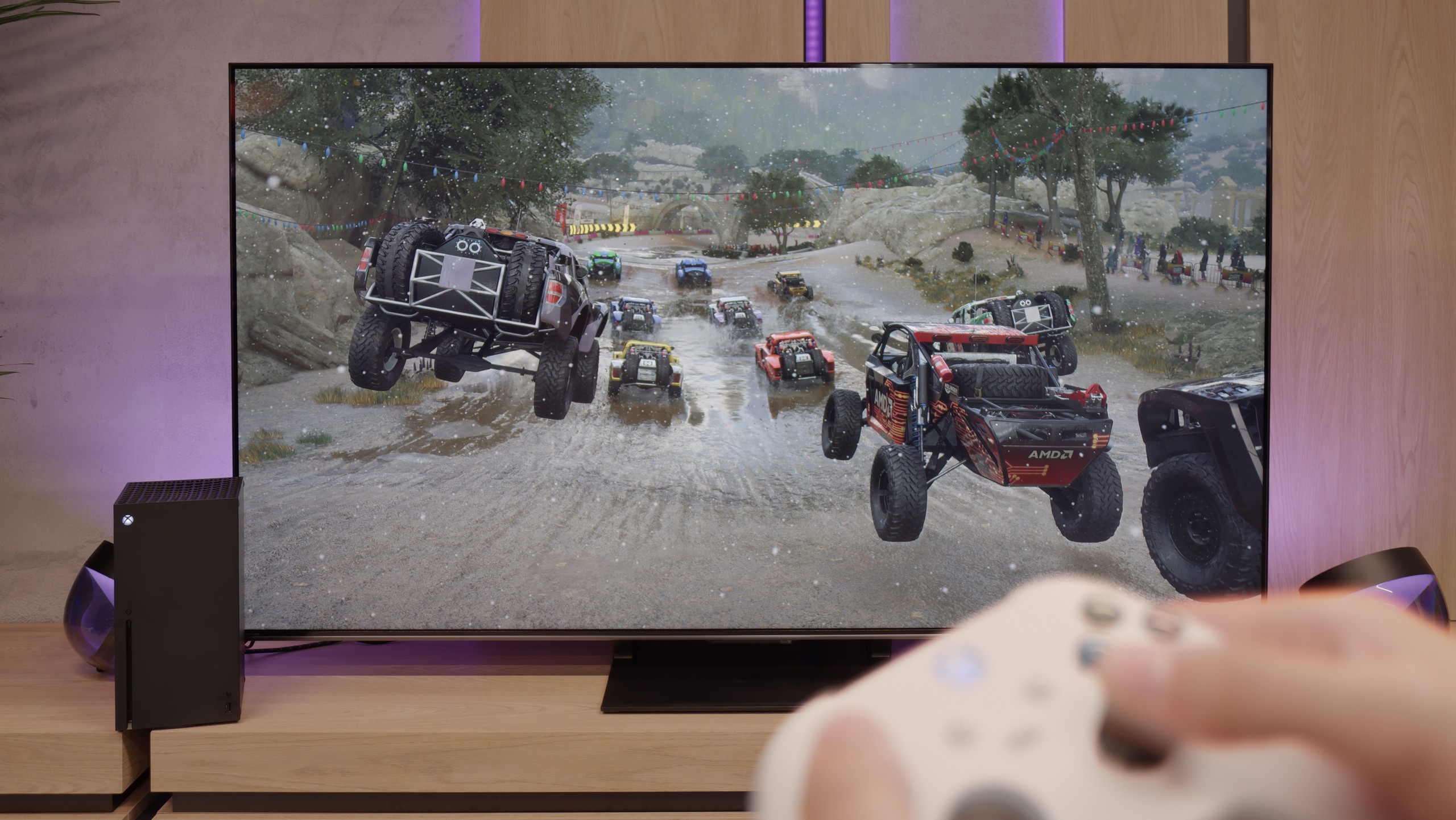
The Frame in version 2024 is equipped with four HDMI ports, but only one of them supports the 2.1 standard with a bandwidth of 40 Gb/s. This is an important piece of information if we plan to connect more than one device that requires a 4K@120 Hz signal – for example, two consoles or a console and a gaming PC. In terms of gaming features, The Frame truly has a lot to offer. We find ALLM (Auto Low Latency Mode), VRR (Variable Refresh Rate), and HGiG. It is worth emphasizing that HGiG has been very well implemented here, which is particularly important since the TV does not support Dolby Vision in games (which is only available on Xbox consoles). In this case, HGiG proves to be a better standard for gaming. Samsung has not forgotten about features that enhance the gaming experience. Game Bar is an advanced panel for gamers that allows for quick adjustment of screen settings without the need to sift through the TV menu. We can even change the aspect ratio from 16:9 to cinematic 21:9, which for some gamers can be a significant advantage. However, Samsung's biggest ace up its sleeve is the Game Motion Plus feature. This is a special smoother dedicated to games, which adds extra frames of animation without significantly impacting input lag. The effect is really noticeable – the image appears much smoother, which fans of dynamic titles will particularly appreciate. In summary – Samsung The Frame is a television that offers a solid set of features for gamers. Although the limitation to one HDMI 2.1 port may be a downside, the rest of the solutions make gaming on this TV a truly enjoyable experience.
The Hisense U7Q PRO is a television that seems almost designed for gamers. It has practically everything you could expect from a gaming screen: variable refresh rate (VRR), automatic mode (ALLM), and as many as four HDMI 2.1b ports with full bandwidth of 48 Gb/s. Additionally, there is a clear and quite functional Game Bar, as well as a well-implemented Dolby Vision GAMING mode that works seamlessly with Xbox Series S and X consoles.
Sounds like perfection? Well, almost. Unfortunately, Hisense has yet to implement the HGiG feature, which is the system's limit on tone mapping on the TV's side. This means that when configuring HDR brightness on the console, we do it "by eye" or look for settings in online guides because the screen doesn't show the real range of its brightness. It's a pity - because HGiG makes it easier to match the console to the TV and helps avoid clipping or overly dark scenes in HDR games.
Fortunately, the other elements work very well. Signal delay (input lag) is low, responsiveness is excellent, and the handling of other functions is flawless. And although not everything worked perfectly, the U7Q PRO can still be recommended to gamers without hesitation.
Input lag
10/10
9.8/10
SDR
HDR
Dolby Vision
In terms of latency, The Frame really impresses. 13 ms with 60 Hz content and 8 ms with 120 Hz are results that will satisfy even the most demanding gamers. Such low values make the reactions to controller movements almost instantaneous. In dynamic games like shooters or racing, every fraction of a second matters – here The Frame performs excellently.
In terms of signal delay, the Hisense U7Q PRO performs really well. For 120 Hz content, the input lag stays below 10 ms, which translates into lightning-fast response – the screen reacts almost instantly to our movements, something that console and PC gamers will particularly appreciate. For 60 Hz content, the situation is slightly worse, as the response time doubles – this is natural and applies to almost all televisions. Nevertheless, it still remains below 20 ms, which can easily be considered a very good result, almost close to perfection – and in practice, it’s hard to feel this during gameplay.
Compatibility with PC
7.6/10
8.2/10

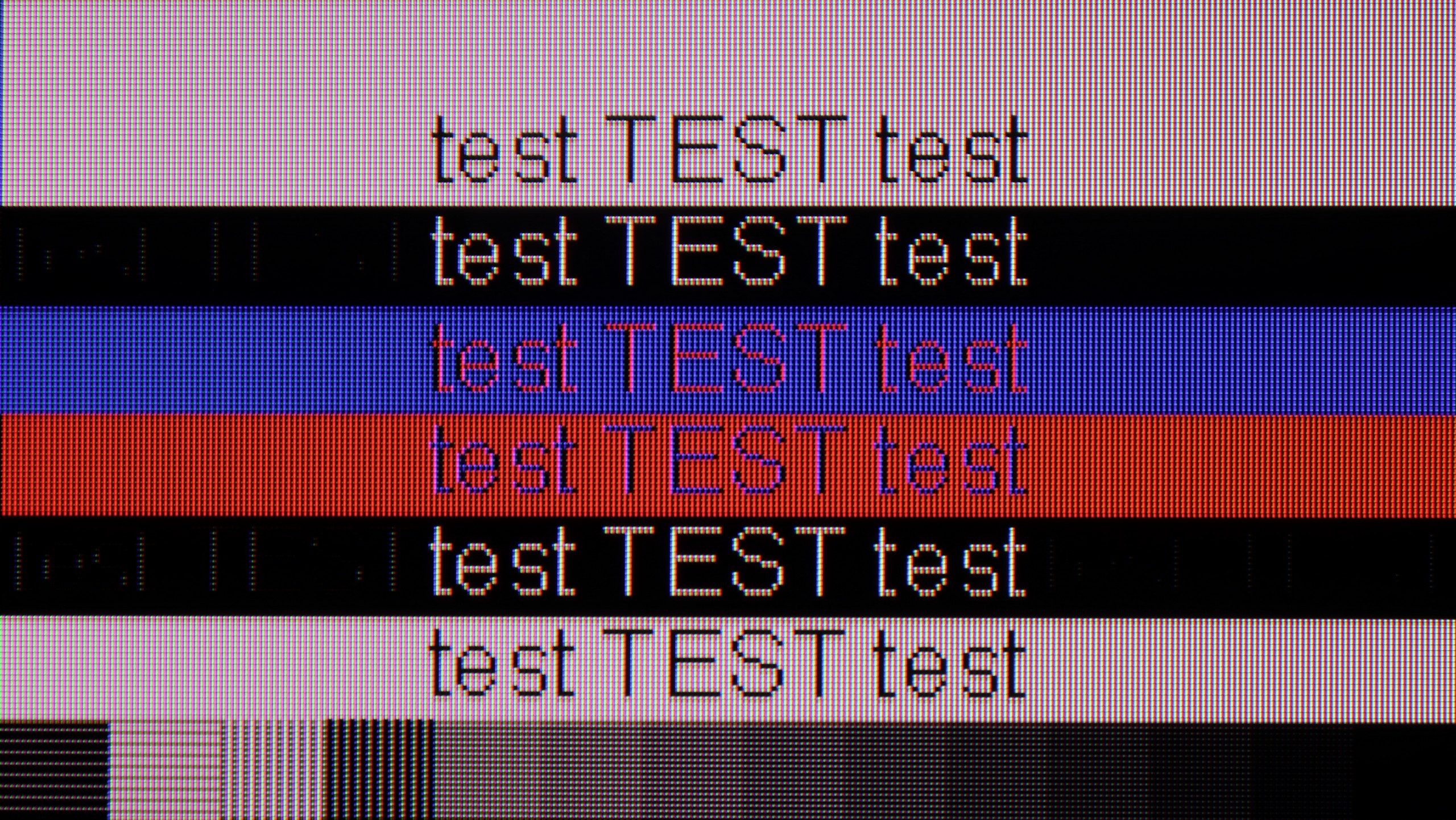
Using a computer on The Frame is truly a pleasant experience. The fonts are clear and well-rendered thanks to the 4:4:4 chroma support. There is no blurring or fuzziness that often appears in cheaper televisions. Of course, if someone scrutinizes small texts, they may notice minimal imperfections, but it's really a minor issue that doesn't interfere with everyday work. It's also suitable for PC gaming. The 120 Hz panel, support for G-Sync, and truly low input lag make games run smoothly and without delays.
Playing on a PC using the Hisense U7Q PRO is pure fun. Low input lag, full 165 Hz at 4K, and even 288 Hz at Full HD – these are numbers we wouldn't expect from a TV at this price. In this regard, it's really hard to complain about anything. If someone is looking for a large screen for gaming from a PC, the U7Q PRO can confidently serve as a monitor. It performs a bit worse for everyday work with text. Although chroma 4:4:4 is present, so theoretically everything should look good. But in practice, gray fonts on a dark background look strange – vertical lines are sharp, but horizontal ones can blur, disappear, or look slightly dimmed. However, it must be honestly added that if you use the TV as usual – that is, from a few meters away – you probably won't notice this. The problem only becomes apparent when someone places the U7Q PRO on a desk, a meter from their face, and starts working with text or spreadsheets. If you plan to use it this way – it's worth keeping this in mind.
Viewing angles
3.3/10
3/10
The viewing angles on The Frame are average, which is typical for a VA panel. And here comes a bit of a snag – this television is supposed to serve as a display for images and works of art, which are not always viewed head-on. When viewed at an angle, colors start to lose their intensity, and black turns into shades of gray. This is not at a level that completely ruins the experience, but if the TV is placed in a position where it will often be viewed from the side, the effect may be noticeable. It's a pity because better viewing angles would be a significant advantage in a TV intended for such purposes.
In this regard, the U7Q PRO is average. The television is equipped with a VA panel, which is not known for its wide viewing angles. When we start to look at the screen from an angle, the image clearly loses brightness, and the colors begin to wash out. This is a completely normal phenomenon in VA panels without additional coatings to widen the angles – so if you plan to watch from the side or with a larger group, it's worth keeping this in mind. On the other hand, head-on – the image looks great, with deep blacks and very good contrast, much better than on IPS/ADS panels.
TV efficiency during daytime
6.5/10
6.2/10




Matrix brightness
Average luminance SDR
Hisense U7Q PRO: 472 cd/m2
Samsung The Frame LS03D : 645 cd/m2
The Frame is equipped with a matte display that manages to effectively suppress direct light reflections. As a result, even in a brightly lit room, the image remains readable, and reflections do not interfere with viewing. Of course, as is usually the case with matte coatings, there is a trade-off – colors lose some intensity, and black seems more faded during the day. Fortunately, the television compensates for this with a brightness level of 650 cd/m². This ensures that the image is bright, clear, and well visible even in a heavily lit room.
As we mentioned earlier – the U7Q PRO is truly a bright television, especially when it comes to HDR content. In the case of SDR material, the television dims a bit, but an average brightness of around 500 nits is still a very solid result. This means that you can easily watch TV or movies even in a quite bright room. Only in very extreme lighting – for example, strong sunlight directly on the screen – visibility may suffer a bit. Fortunately, Hisense has applied a satin anti-reflective coating that effectively reduces glare, and blacks maintain their depth even during the day. This makes a difference and allows for comfortable use of the television in various lighting conditions.
Details about the matrix
Subpixel Structure:

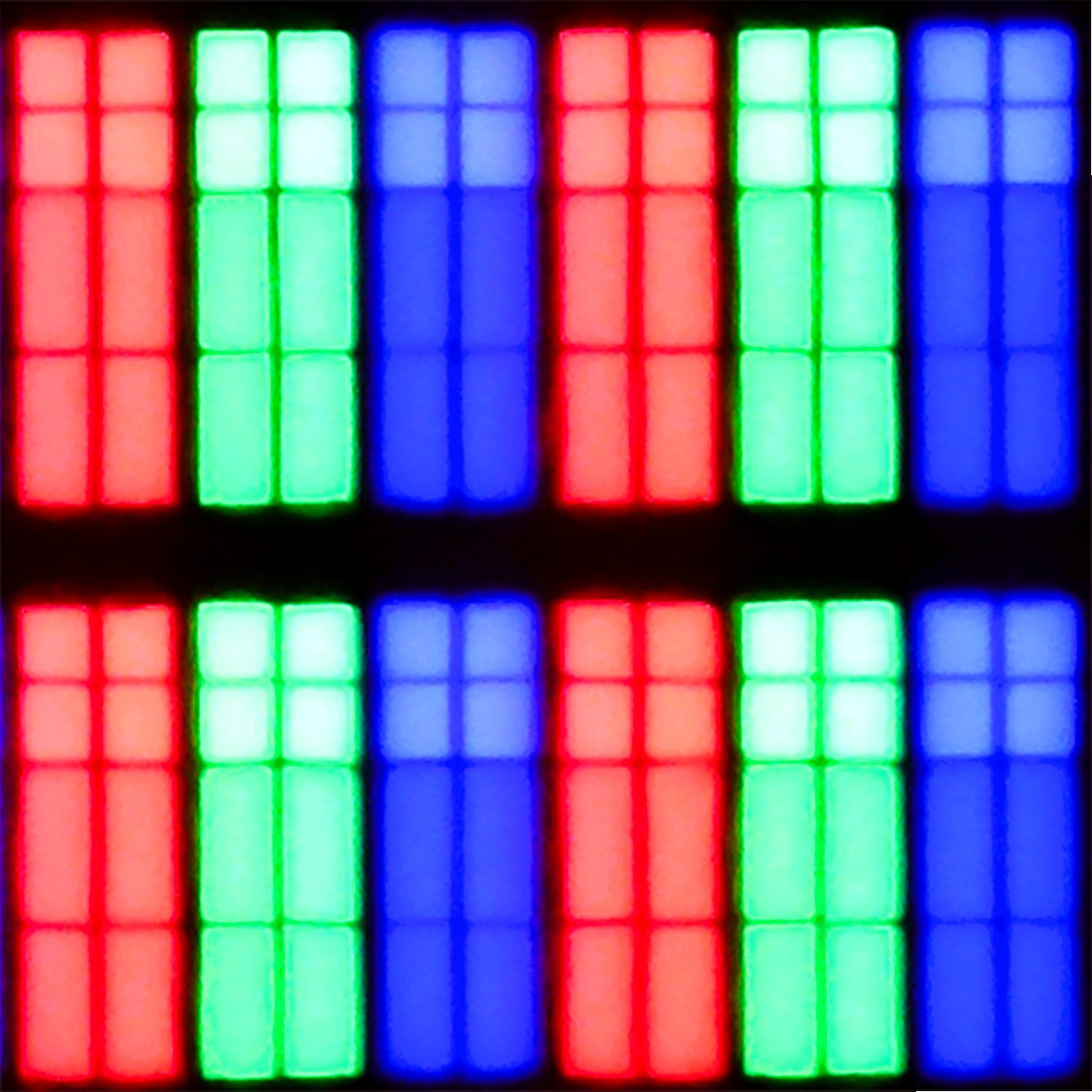
Panel uniformity:

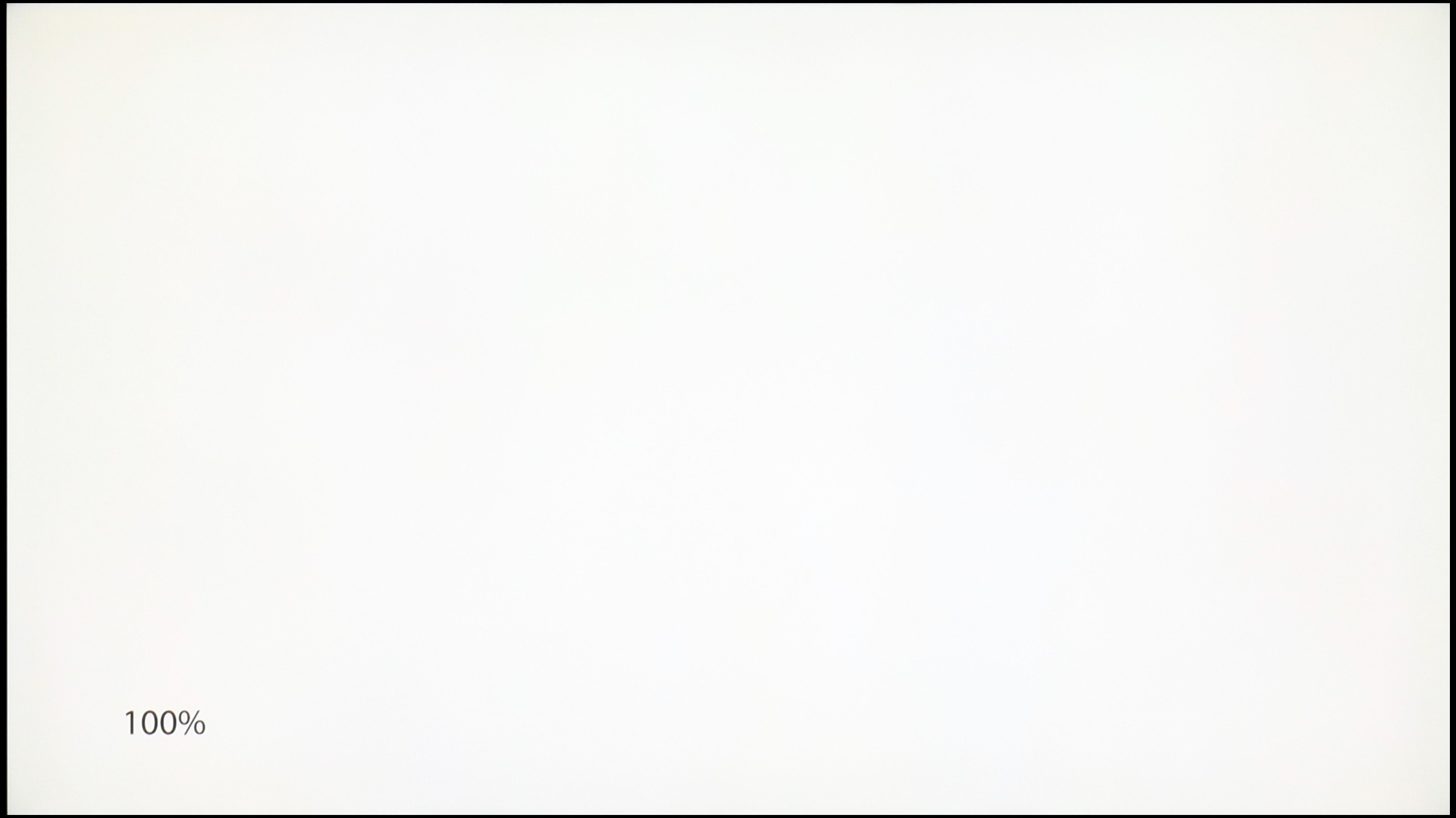
Samsung The Frame LS03D
Hisense U7Q PRO
TV features
8.1/10
9.4/10
- HDMI inputs3 x HDMI 2.0, 1 x HDMI 2.1 40Gbps0 x HDMI 2.0, 4 x HDMI 2.1 48Gbps
- Other inputsRCA (Chinch)
- OutputsToslink (Optical audio), eARC (HDMI), ARC (HDMI)Toslink (Optical audio), eARC (HDMI), ARC (HDMI), Mini-Jack (Headphones)
- Network InterfacesWi-Fi 2.4GHz, Wi-Fi 5GHz, Ethernet (LAN) 100MbpsWi-Fi 2.4GHz, Wi-Fi 5GHz, Ethernet (LAN) 100Mbps
- TV receptionDVB-T, DVB-T2, DVB-S, DVB-S2, DVB-CDVB-T, DVB-T2, DVB-S, DVB-S2, DVB-C
Classic features:
- Recording to USB (terrestrial TV)
- Recording programming
- Picture in Picture (PiP)
- RF remote control (no need to aim at the screen)
- Backlit remote control
- Teletext
- Audio only mode
- Possibility to connect Bluetooth headphones to the TV
- Possibility to simultaneously use Bluetooth headphones and the TV speaker
Smart features:
- AirPlay
- Screen mirroring (Windows Miracast)
- Wyszukiwanie głosowe
- Voice search in native language
- Ability to connect a keyboard and mouse




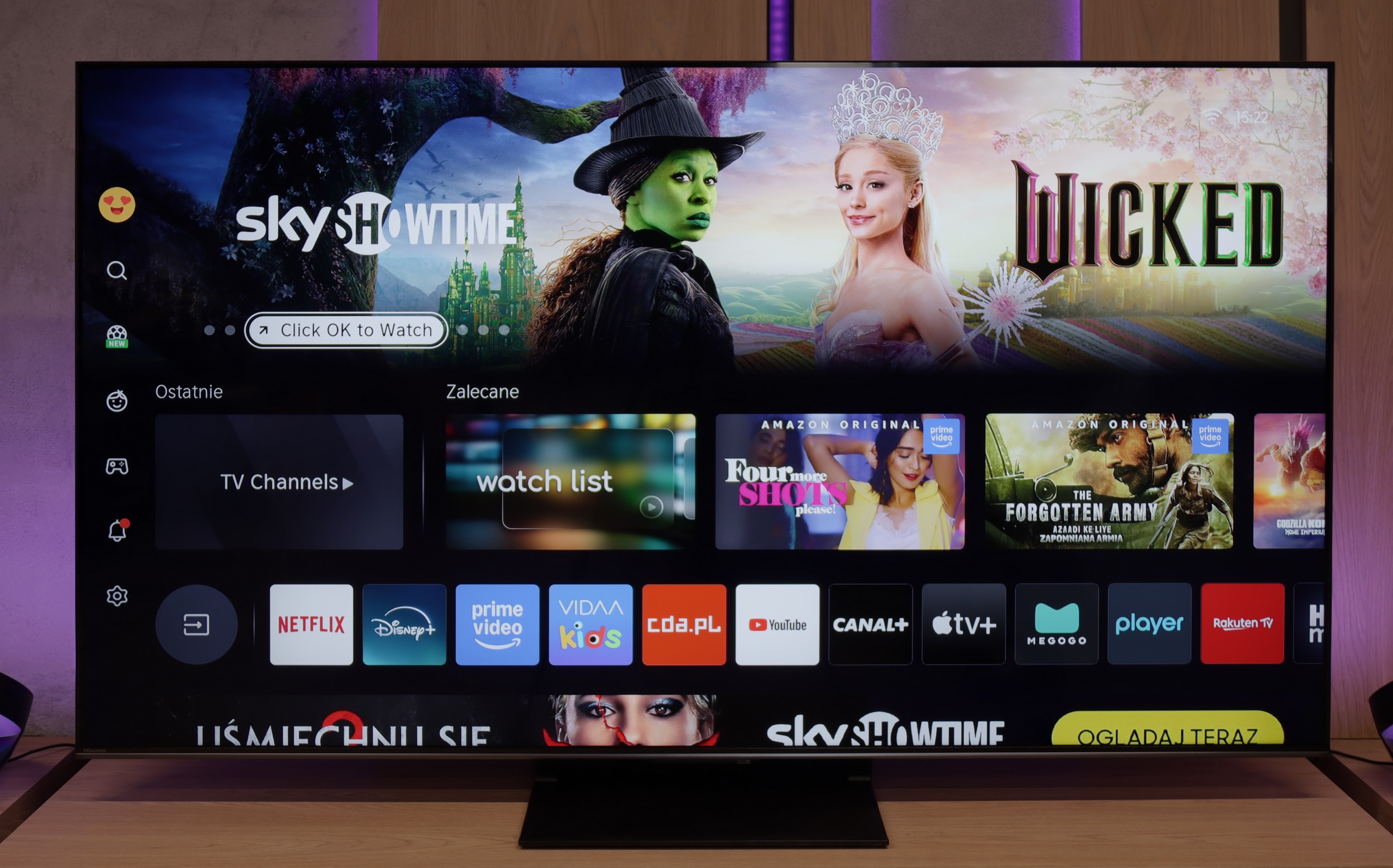
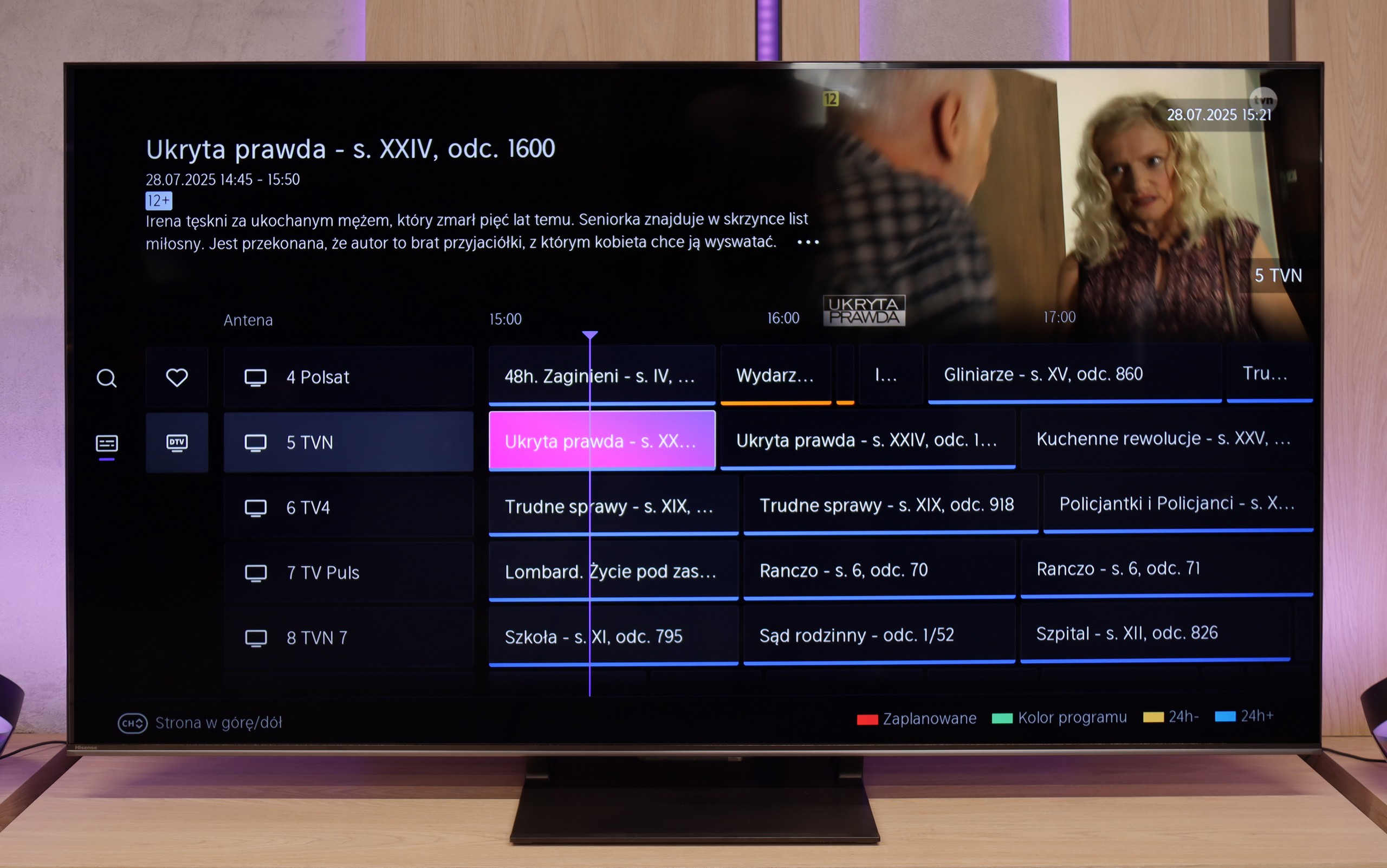
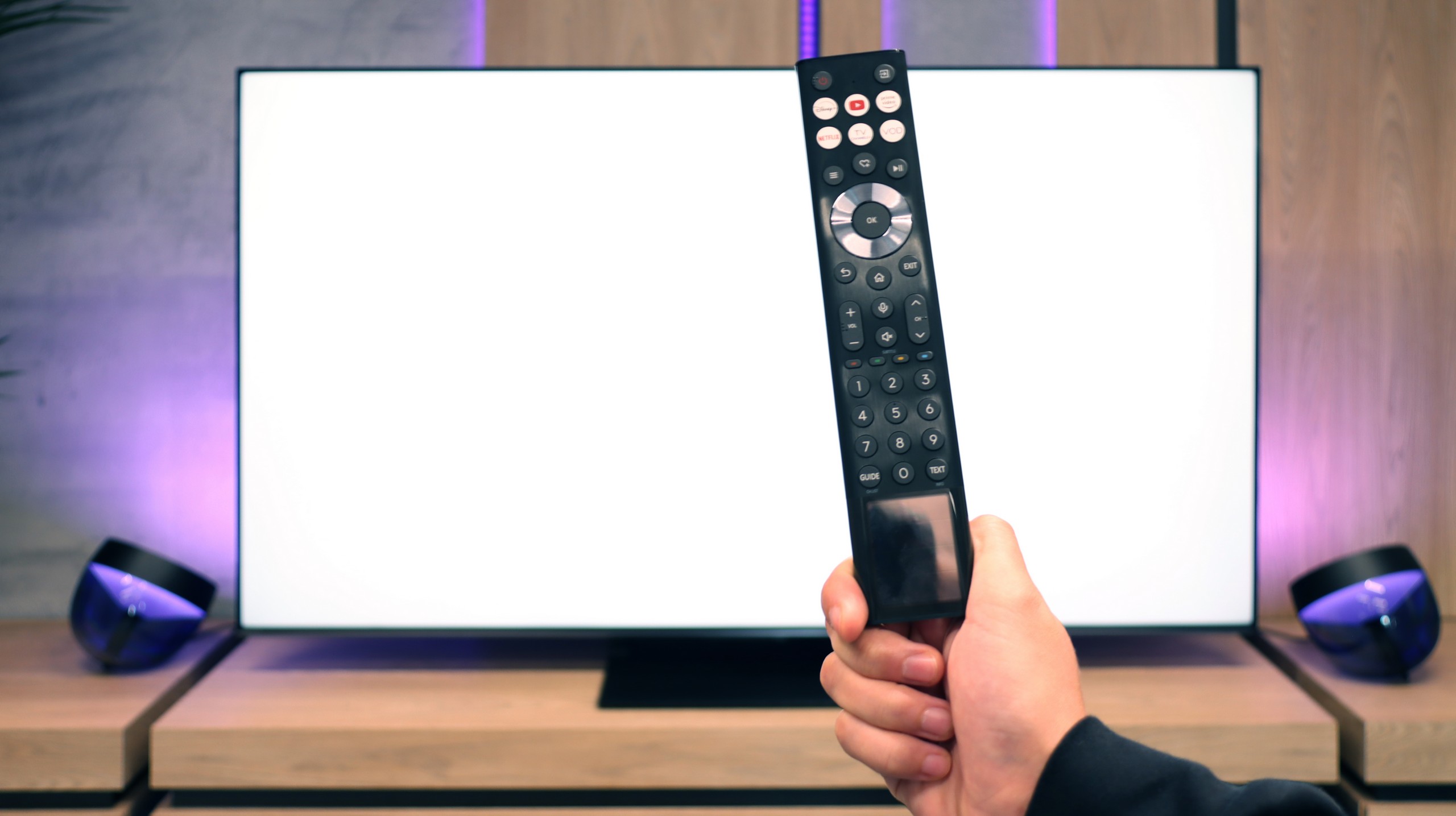

The Frame is a television that stands out from other models and is difficult to describe in a traditional way. Of course, we will find all the standard Smart TV features thanks to the Tizen system. The system works responsively, is extensive, and offers a wide selection of applications. The remote control supports voice commands in Polish, and we can connect additional devices via Bluetooth – just like in many other televisions. But this is not the essence of this model.
The greatest strength of The Frame is its design. The "Art" mode allows you to display thousands of high-resolution images, which, combined with the matte display, look truly exceptional. The effect is surprisingly realistic and hard to compare to any other television.
The frames may not be the thinnest on the market, but they can be customized in terms of color and style to perfectly match the interior. (Sold separately) And although the frames themselves are not ultra-thin, the entire construction is sleek and elegant. The wall mount is also noteworthy, as it is included (its value is around 400 PLN). With it, the television can be mounted almost flush, with no gap from the wall, which further emphasizes the "picture" effect.
And what about the cables? Samsung thought of that too. The Frame is equipped with the One Connect module – an external box to which we connect all devices. Only one nearly invisible cable leads to the television, which transmits both signal and power. The box can be easily hidden in a cabinet or behind furniture, ensuring that nothing disrupts the aesthetics of the interior.
The Frame is more than just an ordinary television – it is a thoughtfully designed decorative element that combines modern Smart TV functionality with exceptional design and practical solutions. Although it lacks typical features like USB recording or PiP, it is not a model created with a classic approach to television in mind. The LS03D is a television that is easy to like for its innovation, originality, and how well it fits into any interior.
Classic Features of U7Q PRO
If you plan to use the television in a more "classic" way, meaning for watching daily programs or connecting headphones, the Hisense U7Q PRO has almost everything you could expect. The TV supports USB recording without any issues, you can connect headphones via Bluetooth, and the remote control is backlit, which still isn't standard even in more expensive models. While many people today forego these classic features in favor of streaming applications, it's good to know that the U7Q PRO still does this properly and without compromises (aside from the lack of a PiP feature).
SmartTV System: Vidaa
As for smart features, in Europe, this model operates on the VIDAA system. The system works smoothly, has a built-in web browser, supports voice control (also in Polish), and AirPlay, which will please users of Apple devices. However, it should be noted that VIDAA is a closed system, so you won't find all the popular applications that Android TV or Google TV have accustomed us to. Before purchasing, it's worth checking if the apps you actually use are available.
Playing files from USB
8.5/10
8.2/10
Supported photo formats:
Maximum photo resolution:

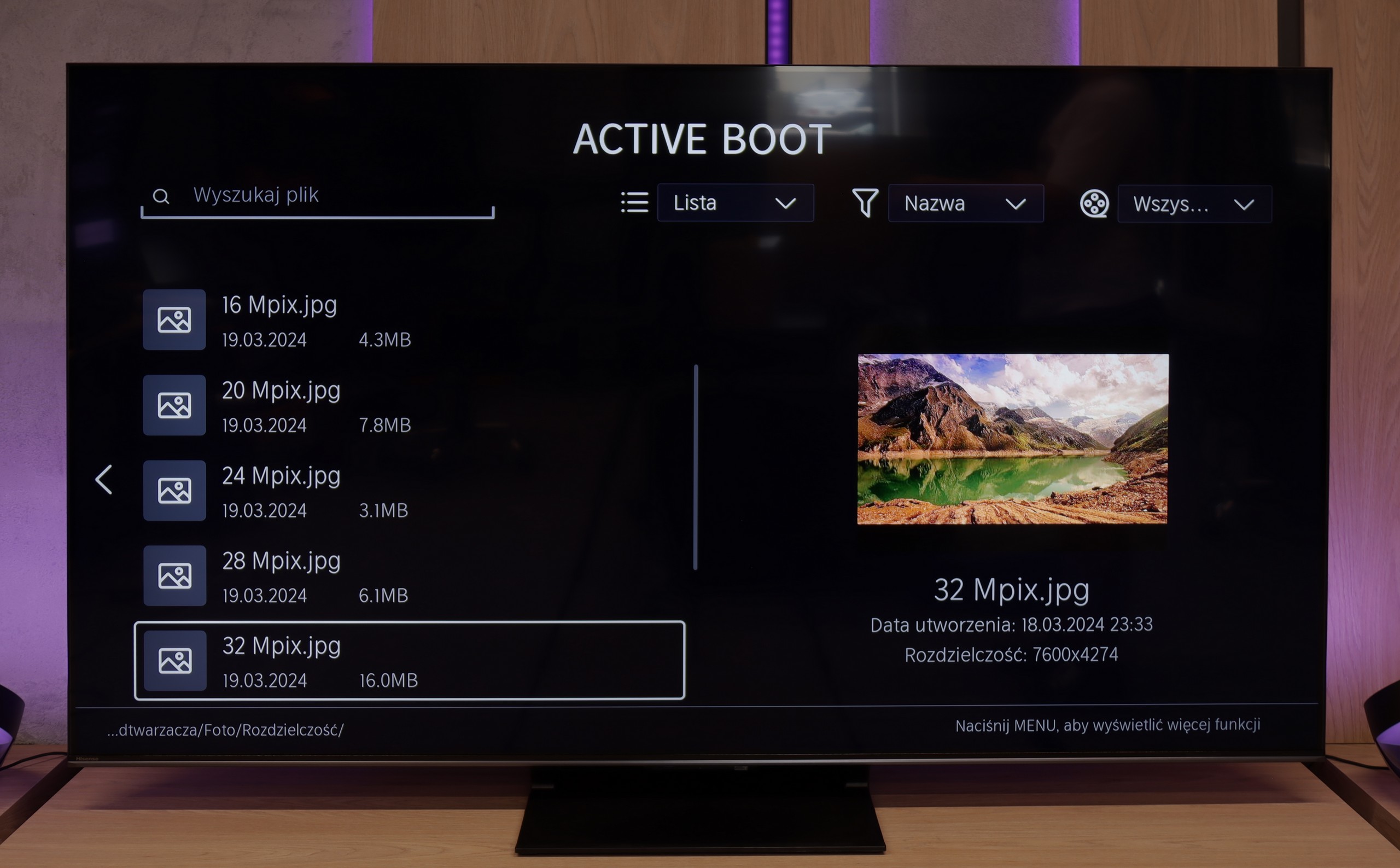
The built-in media player in The Frame handles most popular video and audio formats without major issues. Video files, even those with our added subtitles, play smoothly and without interruptions. The same goes for audio files – there are no major surprises here either. The situation is somewhat worse when it comes to photo format support. The built-in player has some limitations and does not support all possible types of graphic files. However, nowadays most people use wireless photo transfer, so this will not be a major problem for many users.
The built-in media player in the VIDAA system worked very smoothly and without any issues on our U7Q PRO unit. The television effortlessly read external video and audio files, as well as subtitles, making it convenient to watch movies from a USB flash drive or external hard drive. Most popular formats worked flawlessly, so there was no need to convert anything. The only point of contention is a certain selectiveness in handling high-resolution images – not all of them opened. Therefore, you will find an exact list of supported image resolutions (Mpix) in our comparison chart.
Apps
8.7/10
7.7/10














































Sound
5.8/10
7.8/10
- Subjective sound quality:5.8/107.8/10
- Dolby Digital Plus 7.1:
- Dolby True HD 7.1:
- Dolby Atmos in Dolby Digital Plus (JOC):
- Dolby Atmos in Dolby True HD:
- DTS:X in DTS-HD MA:
- DTS-HD Master Audio:
The sound in The Frame is... well, quite average. The slim design of the television, while impressive, does not provide much space for decent speakers. As a result, the sound is flat and lacking in dynamics – just like most televisions in this category. Samsung is clearly aware of this, as it has a special series S of soundbars in its offer, created specifically for the "lifestyle" line of televisions to which The Frame belongs.
For the standards of built-in television speakers, the U7Q PRO sounds surprisingly good. The sound is clear, with distinct mid and high tones, and the bass – while obviously limited – does not completely disappear. One could say that for "TV speakers," the level is more than satisfactory. However, it’s worth noting that in our test model, we were unable to play DTS:X audio from local files – the television simply does not support it. This means that if you are counting on a cinematic spatial effect solely from its built-in speakers, there may be a bit of disappointment. Fortunately, the television seamlessly transmits DTS signal to an external amplifier, so if you have a home theater – just connect it, and everything works as it should.


